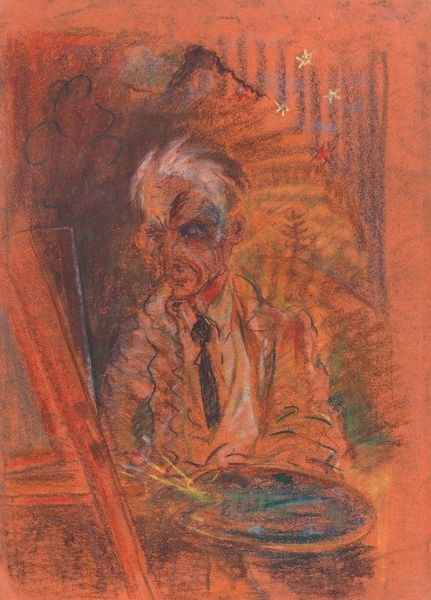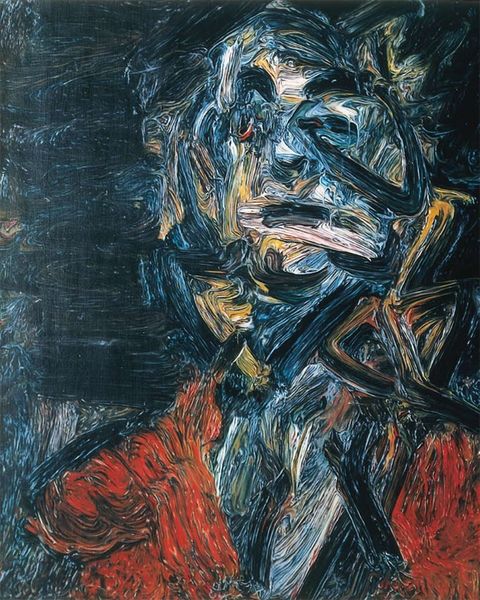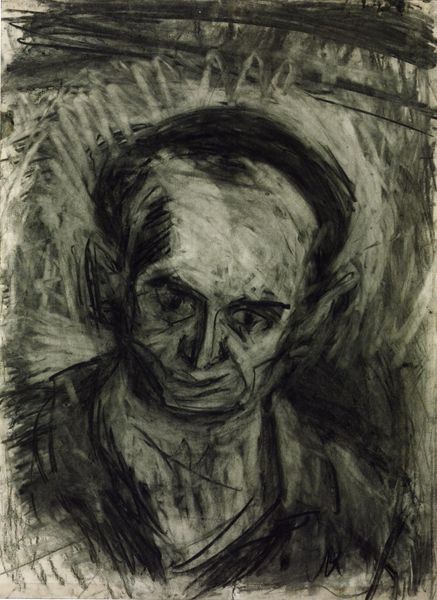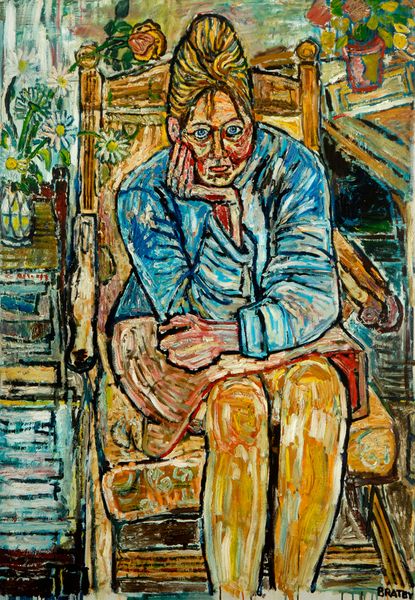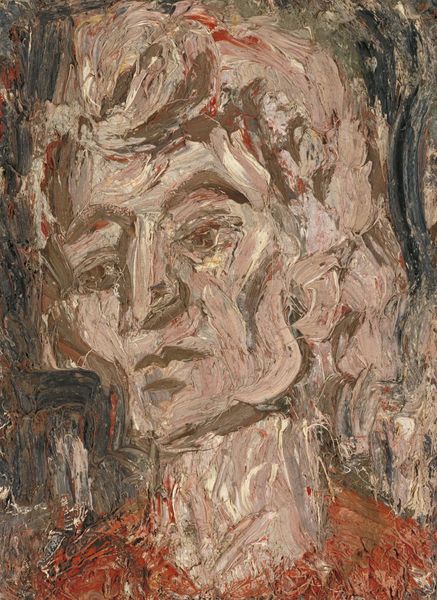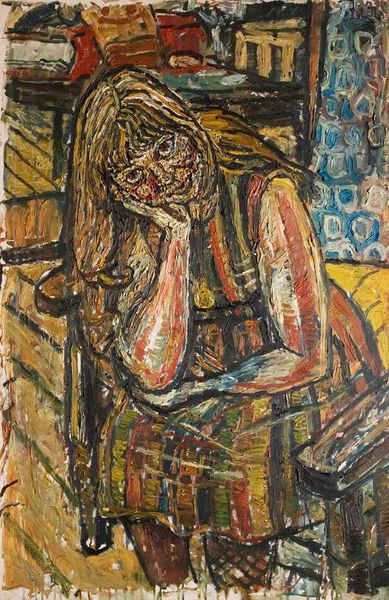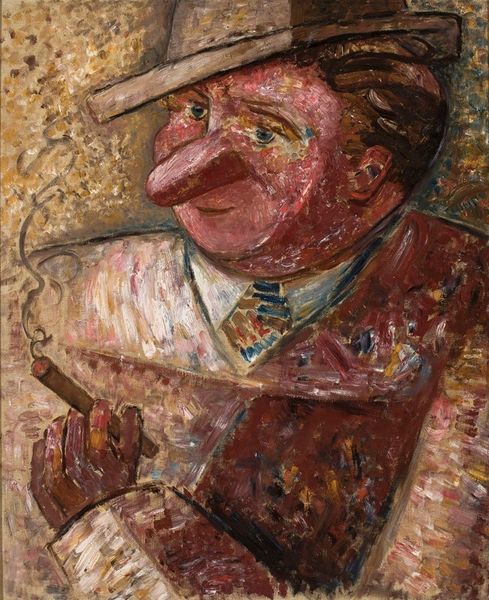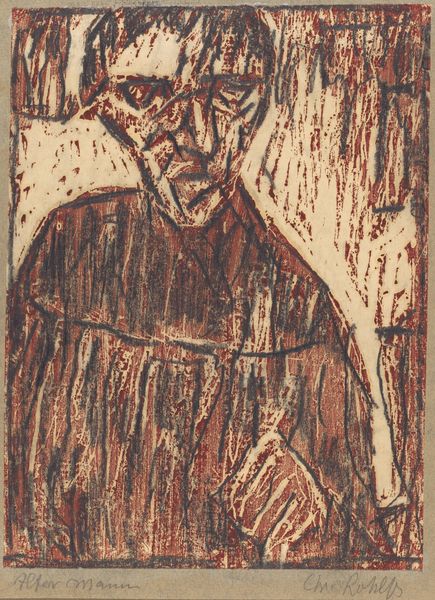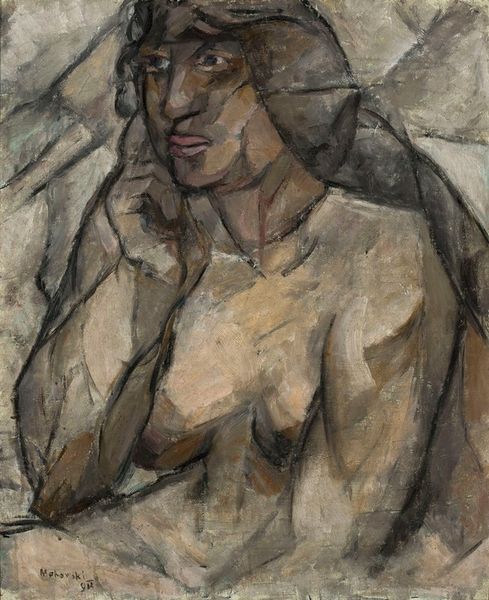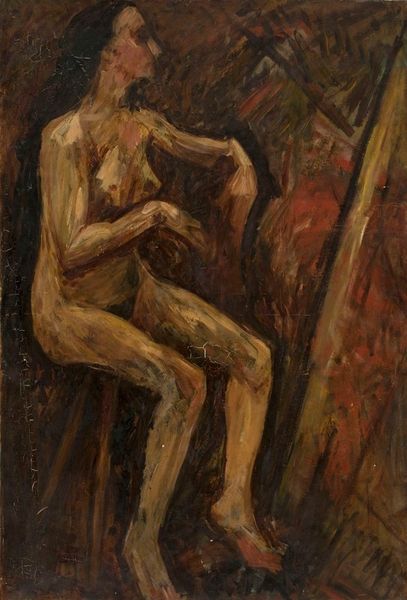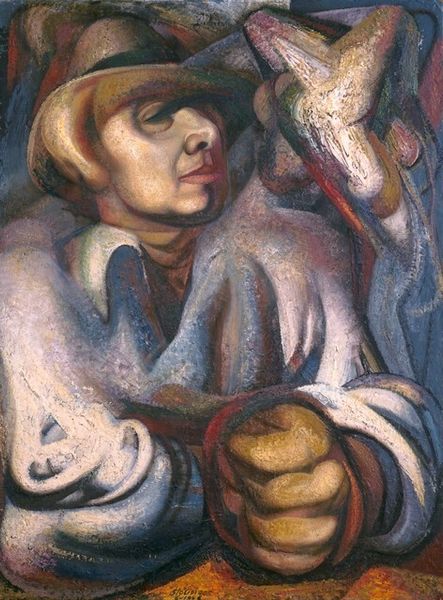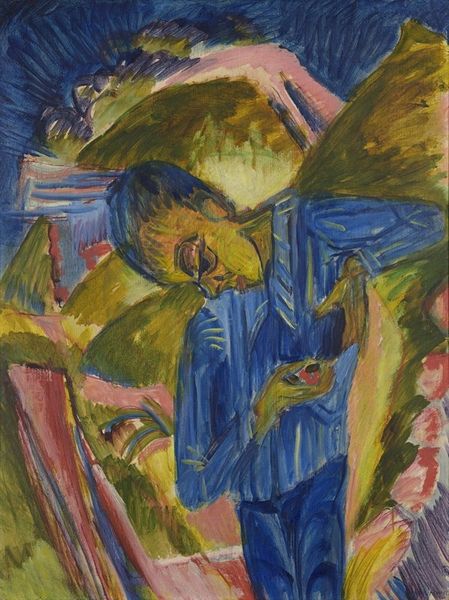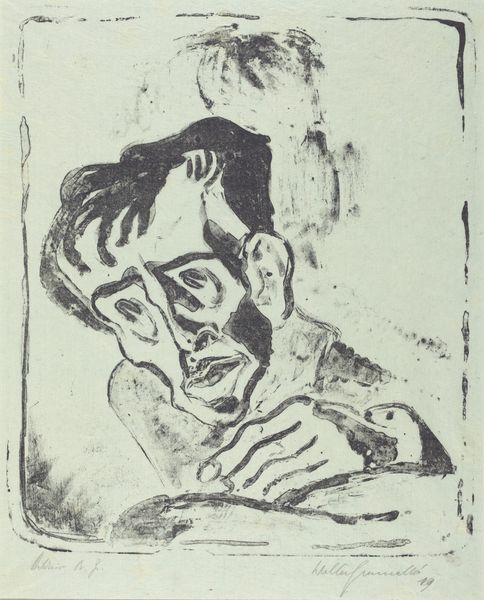
Copyright: Albert Bloch,Fair Use
Curator: This is Albert Bloch’s "Masked Portrait (Georg Trakl)," completed in 1943. The work combines charcoal and pastel on paper. Editor: The immediate impression is one of introspection, perhaps even confinement. The colors are muted, almost somber, and the figure's pose, with hand to chest, feels deeply personal and pained. Curator: Yes, the palette relies heavily on earth tones, but observe how Bloch uses hatching and cross-hatching to build up the form, creating a dynamic surface. The textural quality of the charcoal is crucial to its overall impact. Editor: And what of this mask? It conceals, of course, but it also focuses attention. Masks often serve to transform the wearer or to indicate hidden roles. I see symbols – the moon and star above – perhaps suggesting the subconscious. What stories do you think Bloch might be hinting at? Curator: Formally, the mask provides a focal point, drawing our eye directly to the face. It is a dark void in a composition already filled with ambiguous spaces and restless marks, isn't it? The name, Trakl, scratched alongside his head, is fascinating and troubling. The overall lack of defined boundaries reinforces this tension. Editor: The reference to Trakl is incredibly powerful here. Trakl, a symbolist poet, committed suicide during World War I after suffering a mental breakdown due to his wartime experiences. The painting channels Trakl's history. In many ways the application of a mask makes him the personification of concealed suffering and speaks to the cultural anxieties surrounding the war that ravaged Bloch’s former homeland. Curator: Absolutely, the layered lines almost dissolve the subject into the background. Editor: What seemed like confinement, now feels more like an immersion into a psychological landscape. Thank you, Albert Bloch, for inviting us to examine the symbolism. Curator: The very structure supports its instability!
Comments
No comments
Be the first to comment and join the conversation on the ultimate creative platform.
